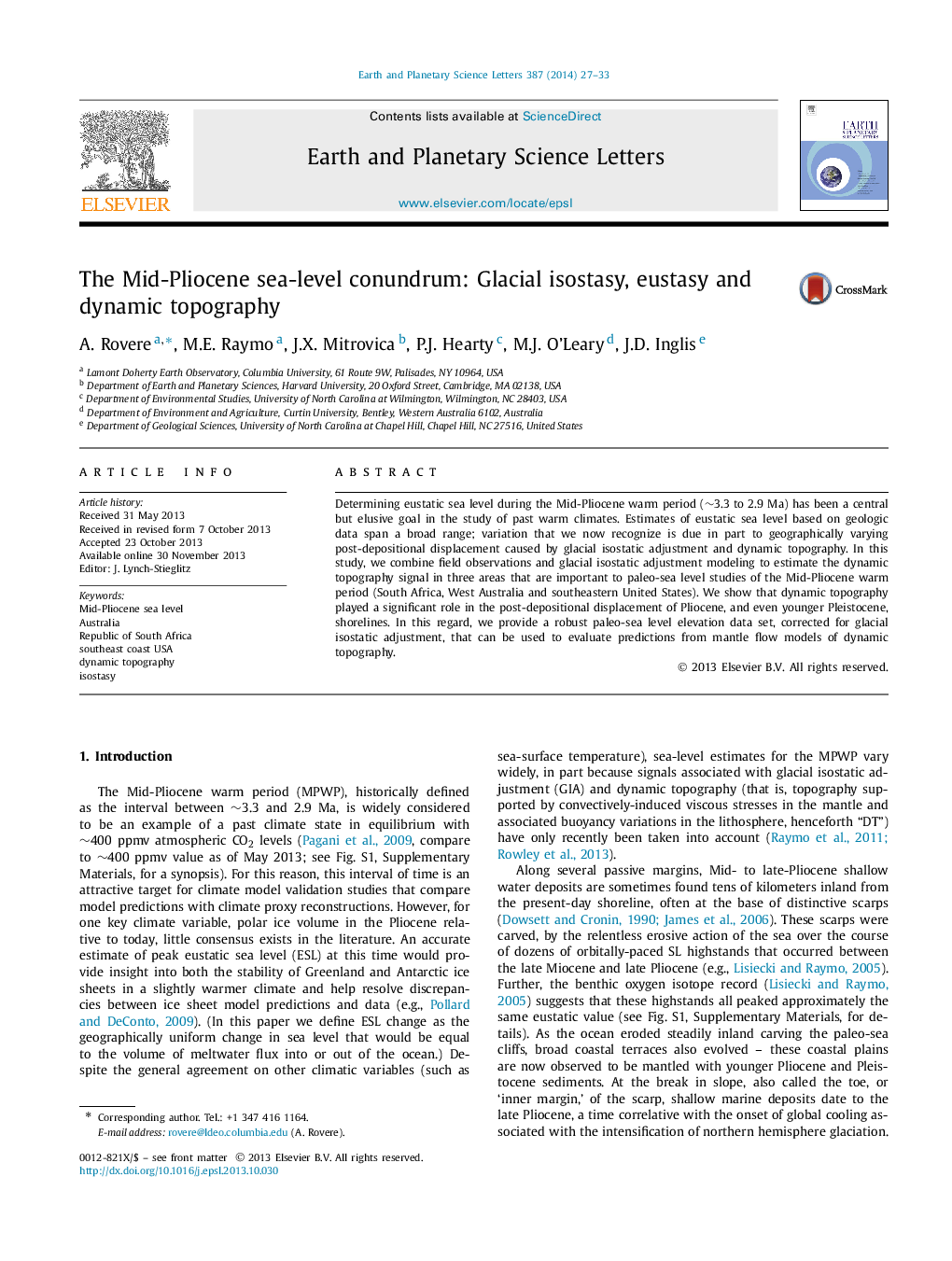| Article ID | Journal | Published Year | Pages | File Type |
|---|---|---|---|---|
| 6429628 | Earth and Planetary Science Letters | 2014 | 7 Pages |
â¢We use geological datasets to estimate Mid-Pliocene relative sea level.â¢We use GIA modeling and field data to calculate theoretic DT rates in three areas.â¢We compare the results with scenarios of Mid-Pliocene eustatic sea level.â¢We provide a robust paleo-sea level elevation data set.â¢Our results can be used to evaluate predictions from mantle flow models of DT.
Determining eustatic sea level during the Mid-Pliocene warm period (â¼3.3 to 2.9 Ma) has been a central but elusive goal in the study of past warm climates. Estimates of eustatic sea level based on geologic data span a broad range; variation that we now recognize is due in part to geographically varying post-depositional displacement caused by glacial isostatic adjustment and dynamic topography. In this study, we combine field observations and glacial isostatic adjustment modeling to estimate the dynamic topography signal in three areas that are important to paleo-sea level studies of the Mid-Pliocene warm period (South Africa, West Australia and southeastern United States). We show that dynamic topography played a significant role in the post-depositional displacement of Pliocene, and even younger Pleistocene, shorelines. In this regard, we provide a robust paleo-sea level elevation data set, corrected for glacial isostatic adjustment, that can be used to evaluate predictions from mantle flow models of dynamic topography.
